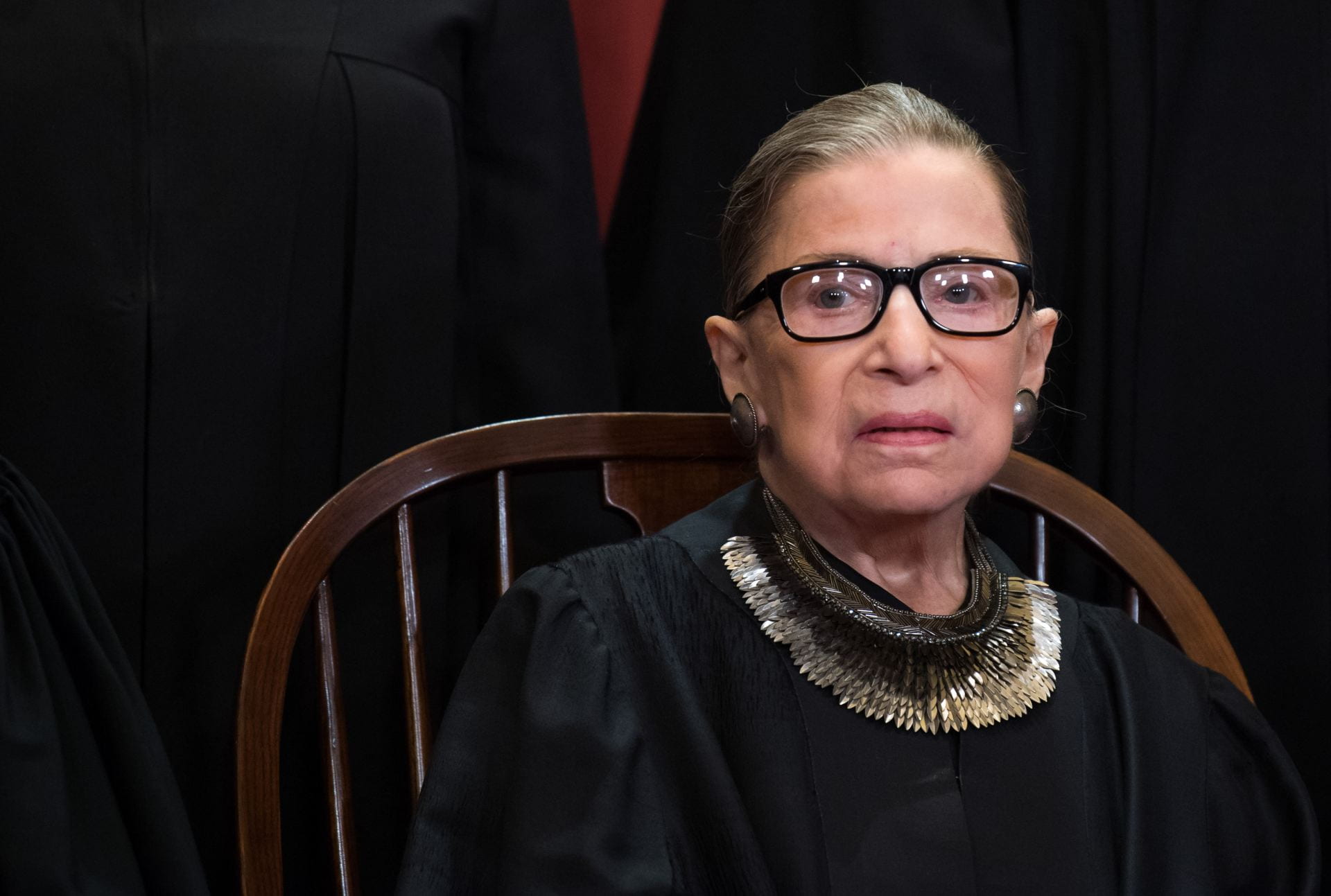
Supreme Court Associate Justice Ruth Bader Ginsburg poses during the official Supreme Court group portrait at the Supreme Court on November 30, 2018 in Washington, D.C. Credit: Kevin Dietsch/Pool/Sipa USA via TNS
On the afternoon of Jan. 17, 1973, Ruth Bader Ginsburg entered the Supreme Court Building with what seemed like an impossible task: convince a panel of men on the highest court in the land that gender-based discrimination exists.
In the Frontiero v. Richardson case, Ginsburg — a general council member of the American Civil Liberties Union at the time — argued on behalf of the plaintiff Sharon Frontiero, whose husband under federal law was denied a spousal dependency allowance despite her position as a United States Airforce lieutenant.
This was Ginsburg’s first time in front of the Supreme Court. The case, which ruled that a federal law requiring different qualification criteria for men and women’s spousal dependency unconstitutionally discriminated against women, became a milestone for women’s rights. Ginsburg continued her career in fighting for gender equality and was appointed to the U.S. Supreme Court in 1993 — a position she held until her final day of life.
The Supreme Court announced the death of Justice Ginsburg Sept. 18.
For Trina Thomas, a second-year law student, hearing the news about Ginsburg was numbing.
“With her death, a lot of things that hang in the balance for people who are minorities, people in different positions, just — she was fighting for all of us,” Thomas said.
Ginsburg began her path in law in 1965 at Harvard Law School, where she was one of nine women in a 500-person class, according to Cornell Legal Information Institute’s Oyez.org. She transferred schools in 1959 during her last semester and graduated first in her class at Columbia Law.
“She paved the way for a lot of us to have aspirations and also to look at law school as something we’re doing for ourselves as well as something we’re doing for our career,” Jamie Feyko, a second-year law student, said.
Ginsburg became a professor at Rutgers University Law School in 1963 and then at Columbia Law in 1972, where she became the first female professor to earn tenure at the university, according to Oyez.org.
In 1972, Ginsburg co-founded the Women’s Rights Project under the ACLU, according to the ACLU’s website. In this time, she began representing sex discrimination cases, and the Frontiero v. Richardson case was just the first of many Ginsburg argued in front of the Supreme Court.
The cases Ginsburg represented were far from random, as Feyko said she strategically chose plaintiffs, including men, that she believed could make a strong case for sex discrimination and appeal to the all-male court.
“Ginsburg took a broad look at gender discrimination, fighting not just for the women left behind, but for the men who were discriminated against as well,” the Oyez.org website reads.

Associate Justice of the Supreme Court Ruth Bader Ginsburg, left center, is sworn-in by Chief Justice of the United States William H. Rehnquist, right, during a ceremony in the East Room of the White House in Washington, DC on August 10, 1993. Credit: CNP via TNS
Among the list of strategic cases was Weinberger v. Wiesenfeld in 1975, in which Ginsburg represented the plaintiff Stephen Wiesenfeld — a widower and single father of a newborn after his wife died during childbirth. Wiesenfeld was granted Social Security benefits for his son but was denied them for himself, as the Social Security Act only provided benefits based on the earnings of a deceased husband and father that are available for the widow and children. The benefits for a deceased wife and mother are only available to the children, according to Oyez.org. The Supreme Court ruled that gender-based discrimination in reference to the Social Security benefits is counter-productive and illogical.
Despite the historic nature of her career, Ginsburg has faced criticism from some and has been referred to as a “white feminist.” White feminism focuses on the experiences of white women, ignoring intersectional influences such as race that can deepen the struggle for gender equality.
After a 2016 interview with Katie Couric, Ginsburg faced backlash after calling Colin Kaepernick’s protest of the national anthem “dumb and disrespectful.” Ginsburg later apologized for her comments.
Thomas said that Ginsburg’s position as a white woman allowed her to understand and fight for many issues on the basis of sex, but that the experience of a white woman and the experience of a person of color are different. Thomas said Ginsburg was tone deaf in her response to Kaepernick.
“I think that she does have an amazing legacy and she’s done some amazing things, but I think there’s always going to be some type of blind spot if she’s not constantly reflecting on her place and some of her privilege,” Thomas said.
Ginsburg was nominated to the U.S. Court of Appeals by President Jimmy Carter in 1980 before President Bill Clinton nominated her as an associate justice in 1993. She spoke out in support of abortion during her 1993 confirmation hearing for the Supreme Court.
“This is something central to a woman’s life, to her dignity,” Ginsberg said during the hearing. “It’s a decision that she must make for herself. And when government controls that decision for her, she’s being treated as less than a fully adult human responsible for her own choices.”
After a lifetime of taking stances that were often viewed as unpopular, Claire Halffield, a second-year law student and president of the Student Bar Association, said she appreciated Ginsburg’s willingness to dissent.
“I really appreciate and value that she knew that it was okay to — even though she didn’t agree with the majority — still speak what she believed was important and still know that her voice was valuable,” Halffield said.


